Humidec
Humidec® sensor is a humidity sensor to control the irrigation. It is a very compact and resistive sensor, and relatively cheap, that allows controlling locally the humidity level in large agricultural areas, golf courses, gardens, etc., to provide water according to the real necessity of each point in the ground.
Its principle of operation is the measurement of the sand conductivity, which varies proporcionally with the amount of water. Humidity measurements can be taken by means of digital device or through a centralise system. A device can
control up to 4 sensors simultaneously. The sensor is provided with the cable length wished by the costumer.
Main properties
- Measurement range of soil humidity: 20% to 2 % (weight of water vs. weight of sand)
- Measurement range of water conductivity: 1 μS/cm to 40 mS/cm.
- Centralised measurements via radio or cable.
- Switchable output for the activation of latch valves or rele’s.
- Easy to use.
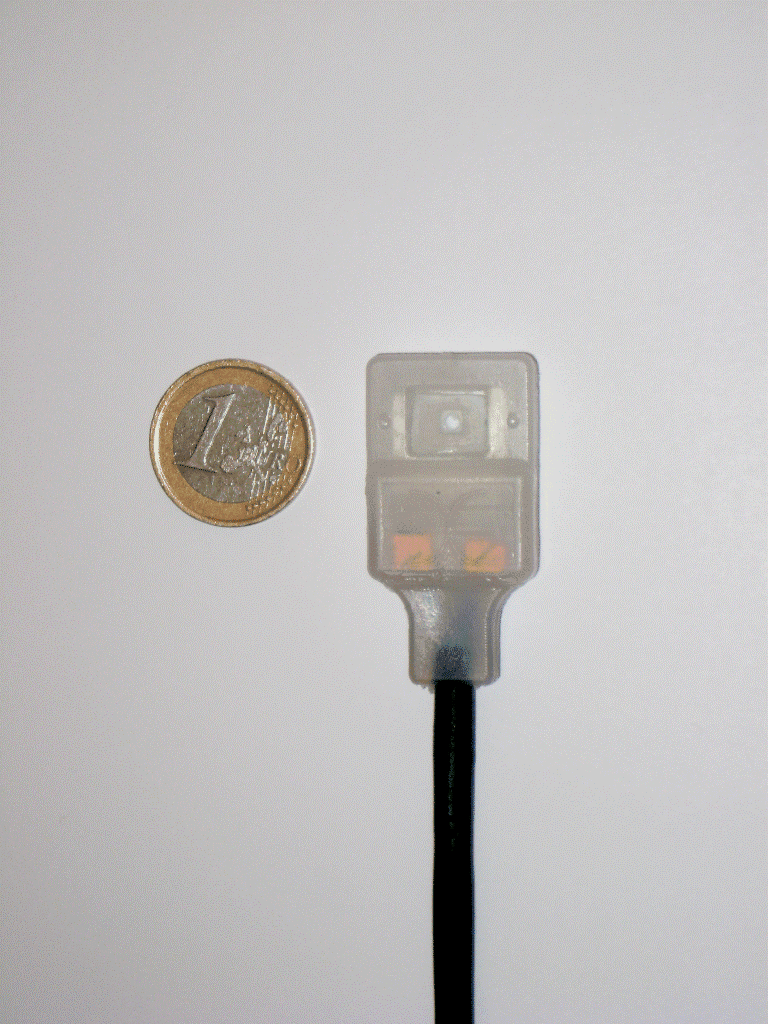
- Long maintenance.
- May detect freezing of water in soils.
- Temperature correction available.
Main applications p>
- Soil conductivity measurement.
- Control of the soil salinity.
- Connection to earth
- Water conductivity measurements
- Water quality control in environment and industrial applications.
- Control of ferti-irrigation.
- Hydroponic crops.
- Soil moisture measurement
- Irrigation control
- Forest fire prevention.
- Forest farming
Sensor response shows a linear behaviour in both conductivity versus water content measurements and water conductivity up to 50 mS/cm (approximately sea water conductivity) response.
Humidec sensor has been checked in several experimental fields, among them in an orange tree land with drip irrigation. Two sensors were placed at two different depths. It is observed in the response a delay in the water front arrival (about 10 minutes) with regard to the irrigation beginning and another delay in the arrival to the deepest sensor. This delay depends on the initial humidity of the land. The high conductance reached it is due to the liquid water crossing, which once it has totally percolated allows the measurement of
the humidity absorbed by the land. The deepest sensor detects liquid water during a longer time (1 hour) due to the decrease of the water flux speed as the depth increases.
Example of orange trees irrigation supervised by two Humidec sensors placed at two different depths. After the daily irrigation, a strong rise of the sand humidity appears. The deepest sensor responds 1 hour later than the one closer to the surface. That corresponds to the time the water takes to cover this depth. Sensors detected the failure of the irrigation pump that was produced on the 11th day. Sensors allow monitoring the automatic irrigation without moving to the orchard.
 Conductive Glass
Conductive Glass
(Online shop)
—-
Xop Física involved in Agrintel project
![]() an intelligent platform for the monitorization of vine-growing processes
an intelligent platform for the monitorization of vine-growing processes
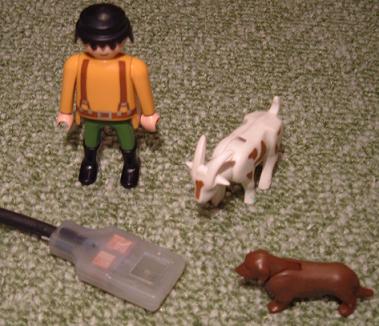
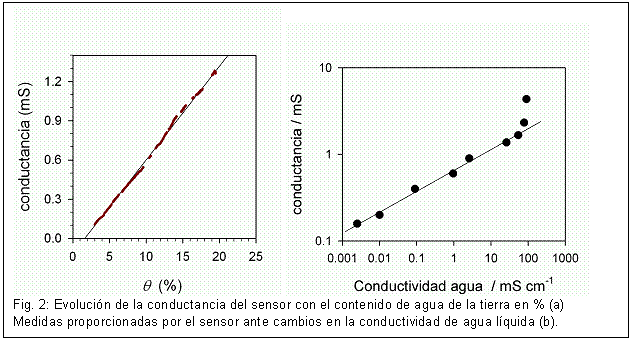
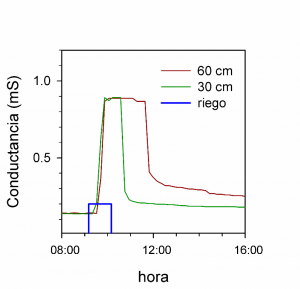
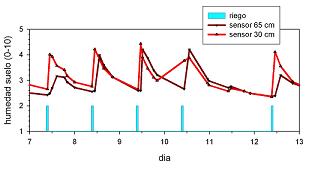 alt="" width="397" height="214" />
alt="" width="397" height="214" />